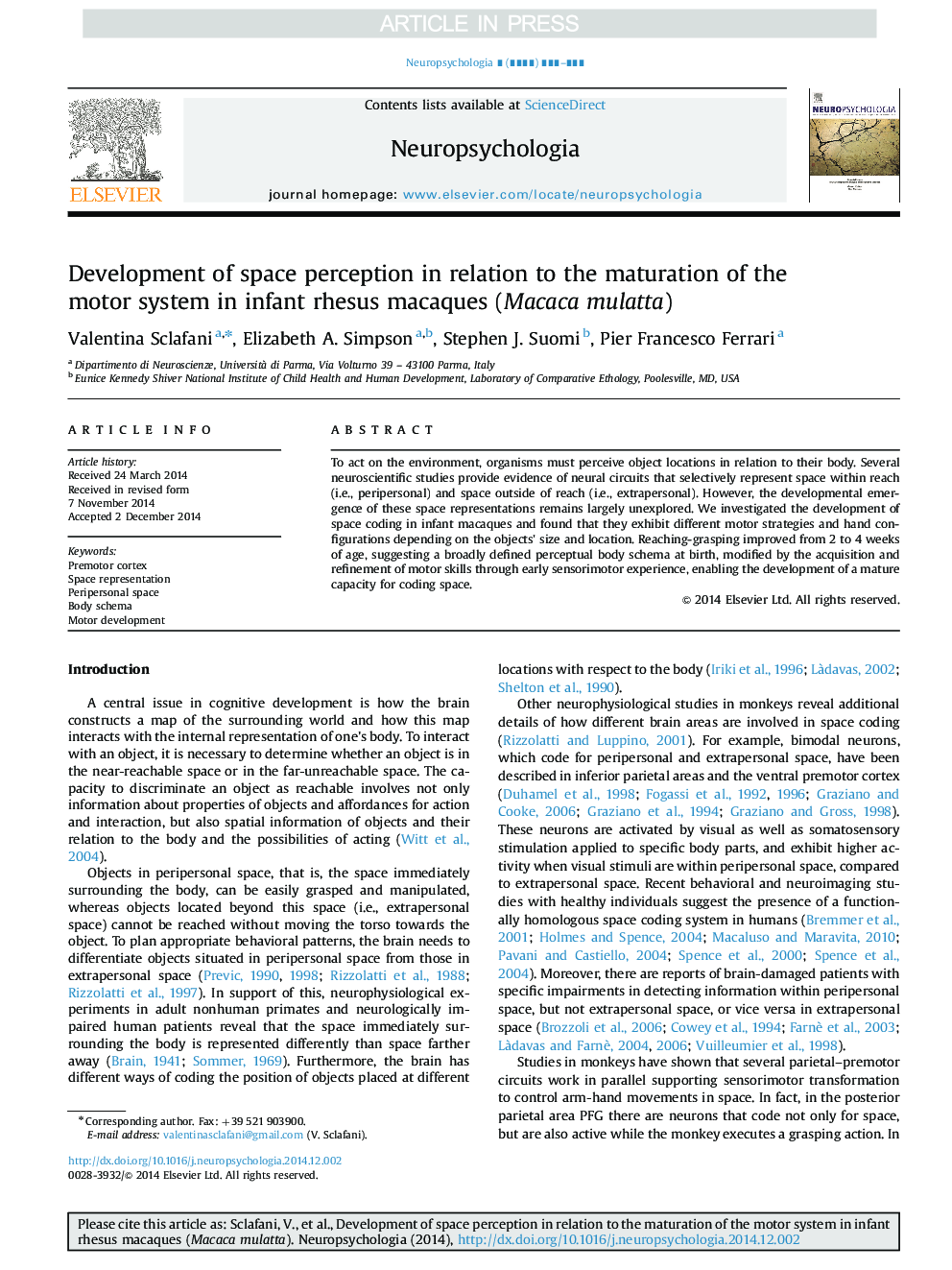| Article ID | Journal | Published Year | Pages | File Type |
|---|---|---|---|---|
| 7320295 | Neuropsychologia | 2015 | 13 Pages |
Abstract
To act on the environment, organisms must perceive object locations in relation to their body. Several neuroscientific studies provide evidence of neural circuits that selectively represent space within reach (i.e., peripersonal) and space outside of reach (i.e., extrapersonal). However, the developmental emergence of these space representations remains largely unexplored. We investigated the development of space coding in infant macaques and found that they exhibit different motor strategies and hand configurations depending on the objects' size and location. Reaching-grasping improved from 2 to 4 weeks of age, suggesting a broadly defined perceptual body schema at birth, modified by the acquisition and refinement of motor skills through early sensorimotor experience, enabling the development of a mature capacity for coding space.
Related Topics
Life Sciences
Neuroscience
Behavioral Neuroscience
Authors
Valentina Sclafani, Elizabeth A. Simpson, Stephen J. Suomi, Pier Francesco Ferrari,
